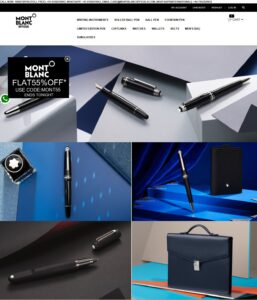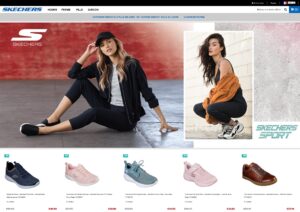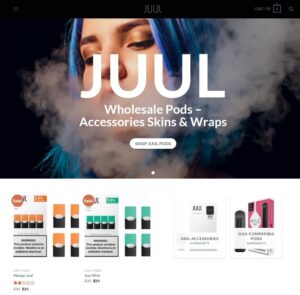Anti-counterfeiting: detecting disputed domain names is a priority
The fight against counterfeiting involves the detection of disputed domain names used for websites selling counterfeit products.
Brands are facing an explosion of fraudulent websites. These platforms hide behind deceptive domain names to sell imitations of genuine products.
For rights holders, this digital threat demands rapid, structured and legal responses. Anti-counterfeiting on the Internet is no longer an option: it’s a strategic necessity.
At Solidnames, we support brand owners, intellectual property attorneys and patent attorneys in securing their online presence. Thanks to our monitoring and targeted intervention solutions, we help to clean up the web and restore consumer confidence.
Words most associated with counterfeit brands
Counterfeiters exploit the deceptive potential of domain names. They select terms with strong commercial connotations. They do this to make it look like an official store or an exceptional promotion.
The following words often appear in domain names associated with the sale of counterfeit products: online, outlet, sale, shop or store , for example.
These terms, alone or in combination, are thus intended to give a false impression of legitimacy or appropriateness. For example, in UDRP case D2019-1623, the domain names <montblancofficial.com> and <montblancsofficial.com> were used to mislead consumers by usurping the image of the famous luxury brand Montblanc by associating it with official .

False Mont Blanc
Furthermore, counterfeiters targeting French-speaking Internet users use reassuring or attractive words such as pas cher or soldes .
In a case documented on faux.fr, the Bonobo brand obtained the closure of sites abusing these terms to offer fake clothes.
The use of geographical terms
Another classic strategy is to associate the brand with a country or country code. A typical example is the decision concerning Skechers and a domain name incorporating the word “France”, analyzed here: faux.fr – Skechers France.
This type of addition is designed to reinforce the site’s credibility, particularly for local referencing.
UDRP complaint consolidation, an effective anti-counterfeiting action
When a network of fraudulent sites uses similar domain names to sell counterfeit goods, the UDRP (Uniform Domain Name Dispute Resolution Policy) procedure enables trademark owners to react. In such cases, consolidating complaints is a highly effective strategy.
What is UDRP consolidation?
Consolidation allows several domain names to be grouped together in a single complaint, provided it can be shown that they are owned or controlled by the same entity, or that they present obvious similarities in structure and fraudulent use.
This reduces costs, speeds up procedures and enables a global transfer of disputed domain names.
Concrete examples of successful consolidation
-
Longchamp: a network of sites was distributing fake versions of the brand’s bags. Thanks to a UDRP consolidation, 56 domain names were recovered. See the case on faux.fr – Longchamp.
-
Gucci: over 200 sites closed after consolidated UDRP action. See details here: faux.fr – Gucci.
-
Clarks: the brand has obtained the transfer of 428 domain names in a consolidated complaint. A large-scale action described on faux.fr – Clarks.
Properly conducted, the UDRP procedure is therefore a strategic lever in the fight against counterfeiting.
Counterfeit fashion brands
One of the sectors most affected by counterfeiting is fashion. In this respect, it is undoubtedly at the top of the list. Indeed, brands of clothing, footwear and accessories, whether luxury or more mainstream, are regularly the target of massive online counterfeiting campaigns. As a result, rights holders must constantly monitor their digital ecosystem.
Designer clothing in the crosshairs
Whether premium brands such as Gucci, Longchamp or Lacoste, or more accessible labels, clothing is a prime target for counterfeiters.
Counterfeit shoes: a growing phenomenon
The branded footwear segment is not spared. Imitation sneakers and technical footwear are rife on the Internet. Impersonator sites use official brand logos and graphics to dupe consumers.

Fake Skechers
Another example: the Merrell brand, specialized in hiking boots, fell victim to a network of 50 fraudulent sites exploiting its image to sell counterfeit goods. This coordinated attack is explained in detail in this report on faux.fr.
Children’s clothing: a vulnerable target
You’d think that children’s clothing brands would be spared, given their often more affordable prices. But this is not the case. In fact, well-known family brands such as Petit Bateau, Okaidi and Tape à l’œil are also regularly targeted by fraudulent sites. The latter then offer products of mediocre quality under their own names. A summary of these cases can also be consulted on the page dedicated to counterfeit children’s clothing on faux.fr.
Counterfeiting affects all business sectors
Although fashion is often the first area mentioned when talking about counterfeiting, it’s essential to understand that this phenomenon goes far beyond the world of textiles. In fact, almost all consumer sectors are now affected. This makes the fight against counterfeiting more complex and more urgent than ever for brand owners.
Counterfeit toys: a danger for children
The children’s toy sector is one of the most sensitive. Highly sought-after during holiday periods and special offers, licensed toys are regularly copied. The danger is not limited to infringement of intellectual property rights.
Indeed, counterfeit products often feature serious manufacturing defects, such as non-conforming plastics or toxic paints. They pose a direct threat to children’s safety. Find out more in this article on toy counterfeiting on faux.fr.
Sports equipment also targeted
Products related to sports and outdoor leisure are also heavily affected. The success of Decathlon’s Easybreath diving mask has led to a proliferation of unsafe copies, as this article explains.
POC bicycle helmets are not spared either. Unreliable imitations are circulating on various fraudulent websites(source). In the climbing sector, Petzl brand safety equipment has also been counterfeited. This exposes users to major risks, as described in this analysis.
The home is no exception
Contrary to popular belief, products for the home are also frequent targets. The German brand Villeroy & Boch, famous for its tableware, has seen its designs illegally reproduced, as can be seen here.

fake baccarat website
The case of the Baccarat crystal glassworks is equally revealing. Its luxury glasses are regularly copied, as explained in this article. Household linen, with brands such as Yves Delorme, is not spared either, as this dossier shows.
Even Nespresso coffee capsules are subject to usurpation, with fake stores not authorized by Nestlé, as this example reveals.
DIY, an underestimated sector in the fight against counterfeiting
Do-it-yourself products, often expensive and technical, are also victims of counterfeiting. Fraudulent websites are posing as official distributors of Makita tools, as illustrated by this article on a fake Makita store.
The Stihl brand has also been copied, notably for its chainsaws, as reported here. In the USA, Kobalt, a brand renowned for its tools, has also been targeted, as explained in this case study.
Healthcare products: a critical issue
Perhaps even more worryingly, the health sector is also seriously affected. Whether for human or veterinary use, counterfeit products can be ineffective or even dangerous.
Some contain prohibited substances, others no active ingredients at all. For an overview, this article on drug counterfeit detection is particularly enlightening.
Even tobacco is concerned
Finally, the tobacco sector is faced with massive trafficking in counterfeit cigarettes. These are sold via parallel circuits that escape all health and tax controls. This phenomenon is extensively documented in this article on monitoring cigarette counterfeiting.

Counterfeit electronic cigarette
“Fake shops used for phishing
As well as selling counterfeit goods, many sites are set up purely to trick consumers. These fake shops deliver nothing. They collect bank details or impersonate buyers.
The consequences are serious:
-
Identity theft
-
Bank card fraud
-
Damage to brand image
Proactive monitoring is essential to detect these sites before they damage the brand.
Anti-counterfeiting solutions from Solidnames
Solidnames offers a comprehensive range of solutions to help brands and their legal advisors combat fraudulent domain names.
Brand Alert
This service continuously monitors domain names registered worldwide. It automatically detects those that resemble or incorporate a protected trademark.
Find out more about our Brand Alert service.
SecURL
SecURL analyzes websites linked to suspect domain names. It checks their content, SSL certificate, hosting provider and other technical elements to quickly identify counterfeiting risks.
Find out more.
Backorder
If a disputed domain name is deactivated, Solidnames can help recover it as soon as it becomes available again, via a priority backorder service.
Discover our solution.